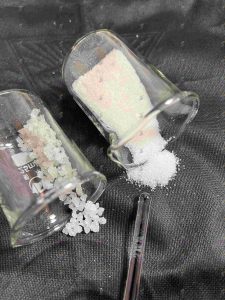Ice packs are a convenient way to keep things cool, whether you’re treating an injury or keeping your lunch fresh. You might wonder what’s inside ice packs and whether the gel inside an ice pack is toxic. In this blog post, we’ll explore the contents of ice packs and answer some common questions about their safety.
What is Inside Ice Packs?

Ice packs come in various types, but the most common ones contain either a solid or gel-like substance. Traditional ice packs are filled with water that freezes, while modern gel ice packs contain a special gel that retains cold temperatures for longer periods.
What is in Gel Ice Packs?

Gel ice packs are filled with a thick, syrupy substance that has a high capacity for retaining cold. The gel is usually a mixture of water and a thickening agent like silica, cellulose, or a polymer called polyacrylate. Sometimes, antifreeze agents such as propylene glycol are added to prevent the gel from freezing solid, which allows the ice pack to remain flexible when frozen.
Is the Gel Inside an Ice Pack Toxic?
The gel inside an ice pack is generally non-toxic, but it’s still not something you want to ingest. Most commercial gel ice packs use non-toxic ingredients like cellulose or silica gel, which are safe for handling. However, some ice packs may contain additives that could be harmful if ingested in large quantities. Always check the packaging for safety information and avoid puncturing the pack to prevent any risk of exposure.
What is in Ice Packs?
In addition to gel ice packs, some ice packs contain water mixed with various salts. These salts lower the freezing point of water, allowing the pack to stay colder for a longer period. This type of ice pack is often used in medical settings to treat injuries and reduce swelling.
Safety Tips for Using Ice Packs
- Read Labels: Always read the label or packaging of the ice pack for any safety instructions or warnings.
- Avoid Ingestion: Never ingest the contents of an ice pack, even if it is labeled as non-toxic.
- Proper Disposal: If an ice pack leaks or gets punctured, dispose of it properly according to the manufacturer’s instructions.
- Use as Directed: Use ice packs as directed, whether for medical treatment or food storage, to avoid any potential hazards.
Conclusion
Ice packs are an essential tool for cooling and treating injuries. Understanding what’s inside ice packs and knowing that the gel inside an ice pack is typically non-toxic can help you use them safely and effectively. Whether you’re using a traditional water-based ice pack or a modern gel ice pack, these handy items are designed to make cooling easy and convenient. Just remember to handle them with care and follow the safety guidelines to ensure you get the most benefit from their cooling power.

